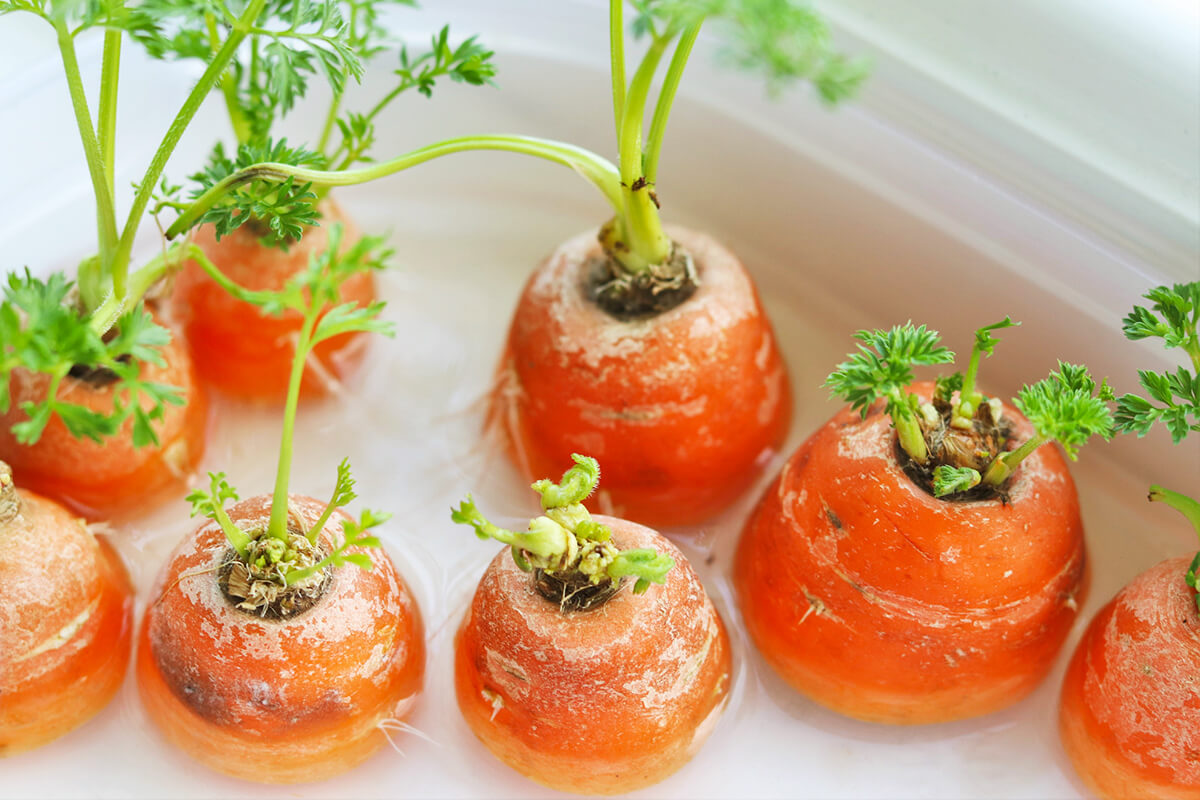Tired of watching your grocery bill go up? Thoughtful, frugal shopping is a good starting point, and you can’t go wrong learning how to store your produce properly or make your cheese last longer. Another option is to regrow vegetables and herbs whenever possible.
Regrowing foods is a double win: Not only will you save a few dollars here and there, but growing even a small amount of your own food is deeply satisfying. Here are a dozen foods that are eager to sprout again, if you’ll just give them the opportunity.
1. Green Onions (Scallions)
Green onions are one of the easiest and most productive vegetables to regrow. All you need to do is save an inch or so of the white ends and place them in a narrow glass with enough water to cover the roots. Place the glass on a windowsill that gets direct light for part of the day, and the scallions will take it from there.
You will start to see new shoots in just a few days. (It’s fun for kids, or anyone else who craves near-instant gratification.) Within a couple of weeks, they will be big enough that you can start pinching or snipping them to use on salads, soups, and other dishes. Remember to change the water every few days, so it doesn’t get foul, and those green onions will keep producing for months.
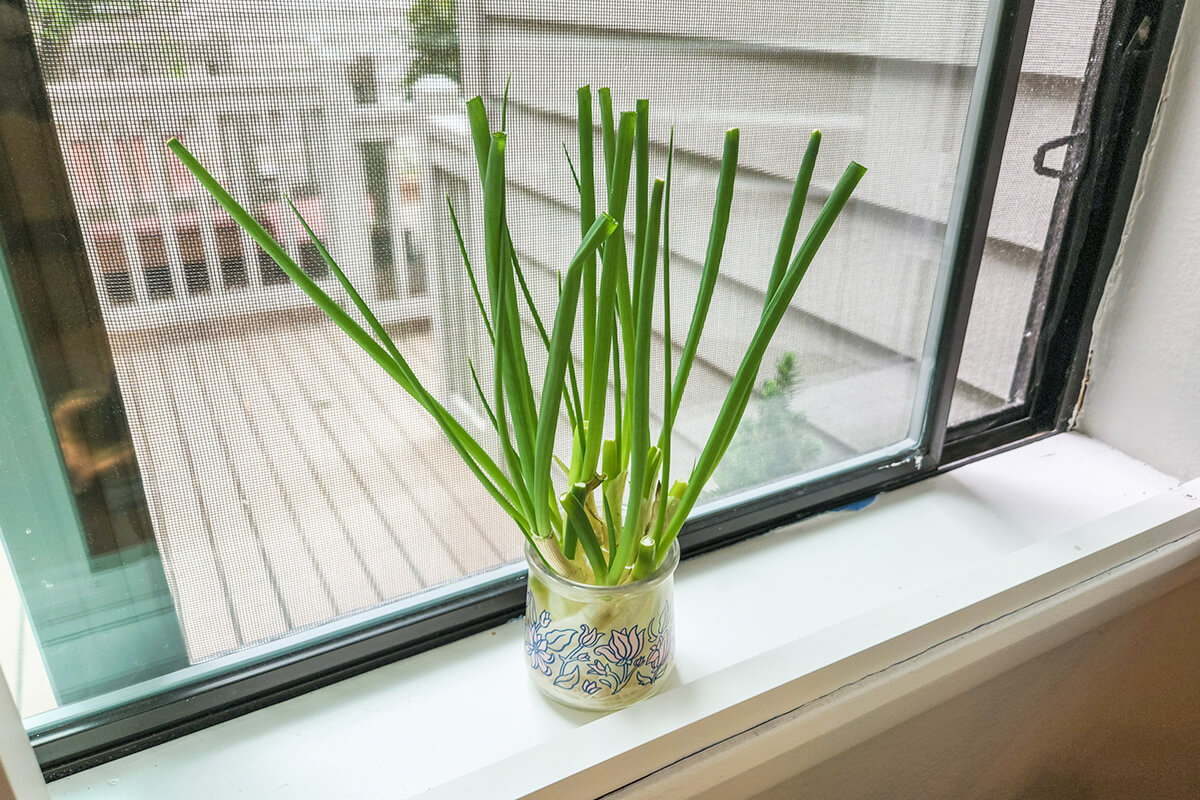
2. Romaine Lettuce
Romaine is a truly versatile lettuce; its juicy stems offer an iceberg-like crunch, while its broad green leaves work just as well as leaf lettuce in most recipes. You can even use the leaves as cups for tuna or chicken salad, or as low-carb wraps.
If you’re keen to regrow vegetables from scraps, romaine is eager to oblige. Save at least an inch or two of the stem end and place it in a shallow dish with a little water (even a peanut butter jar lid will do). New leaves will grow from the crown almost immediately, and you can start harvesting the outer leaves one at a time as soon as they reach baby lettuce size. It’s a method that many gardeners, including myself, use for outdoor lettuce.
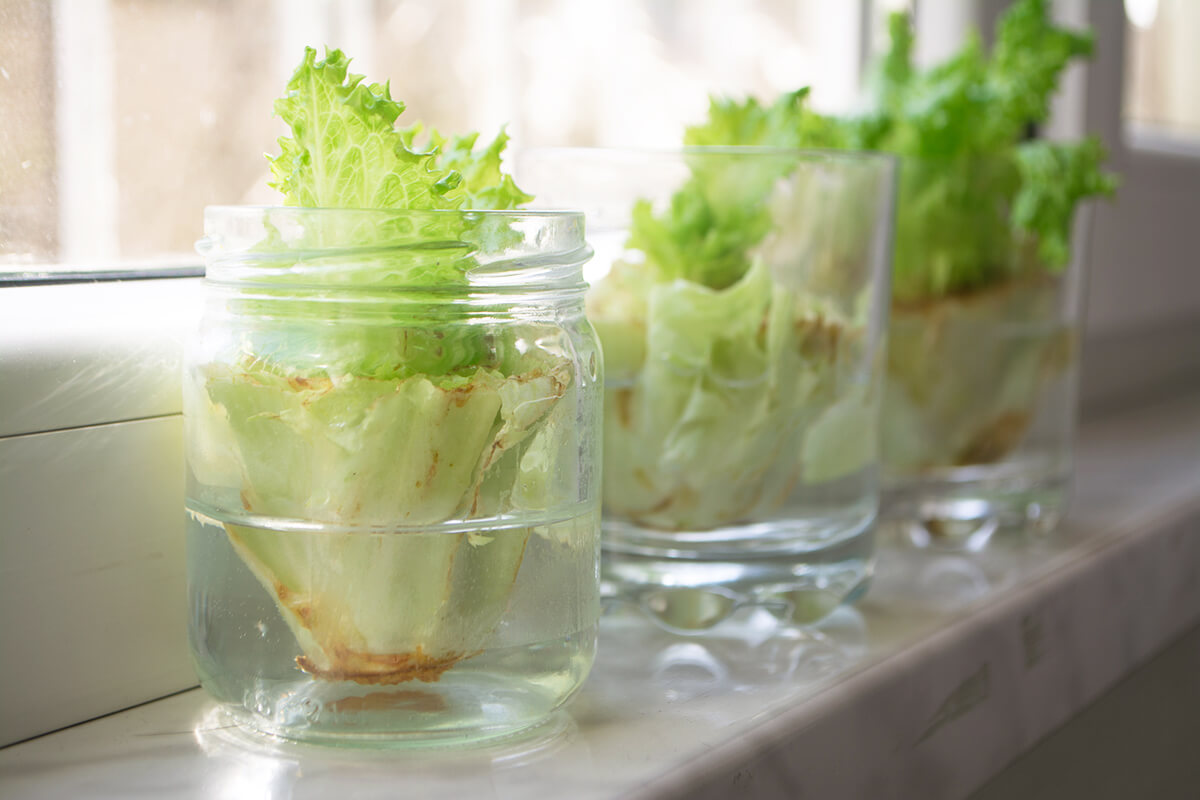
3. Celery
Celery can be a bit finicky to grow from seed, but it’s a much more willing participant if you start with the stump of a store-bought bunch. As with romaine, you can regrow celery just by putting the crown (the base, or root end) into a shallow dish of water and giving it some sunshine. You’ll start to see new growth within days, and you can begin harvesting the tender young stems — from the outside in — whenever you choose.
As a chef, I can tell you these new shoots are tender and mild, and lack the irritating strings you often get with mature celery. Don’t sleep on the leaves, either; I regularly use them as a garnish or salad ingredient, similar to parsley.

More from our network
House Outlook is part of Optimism, which publishes content that uplifts, informs, and inspires.
4. Garlic
Garlic has a natural tendency to sprout in spring, so you don’t need to encourage it a whole lot. If you have a bulb that’s begun to put out green shoots, it’s already past the point where its flavor and texture are at their best. Instead of using it now, separate the cloves and plant them individually in 3-inch pots filled with normal potting soil. Or, if you’re using a larger container, space the cloves 4 to 8 inches apart. A little soil, a consistent watering schedule, and six hours of direct sunlight per day are all they need to grow and flourish.
The bulb is ready to harvest when the stem yellows, but you can use it as green garlic as soon as it’s large enough. (Green or immature garlic hasn’t divided into bulbs yet, but offers a zesty garlic flavor.) You can also transplant the cloves to your garden, if you have one. Hardneck varieties will produce a woody seed stem with a curved scape at the end; you should harvest and eat them when they appear. The scapes themselves aren’t woody, delivering a boost of garlicky goodness.

5. Leafy Herbs
Leafy herbs, such as cilantro, parsley, mint, and basil, are quite delicate and often go bad before you can use them up. Storing them in a glass of water, away from light and loosely covered with a plastic bag, helps them last longer and even continue to grow.
To propagate leafy herbs, cut or pinch a small stem or even a large, healthy leaf from your chosen herb and put it in a small glass of water. Most leafy herbs will set roots, and you can either keep them in water or transfer them to soil as they grow.
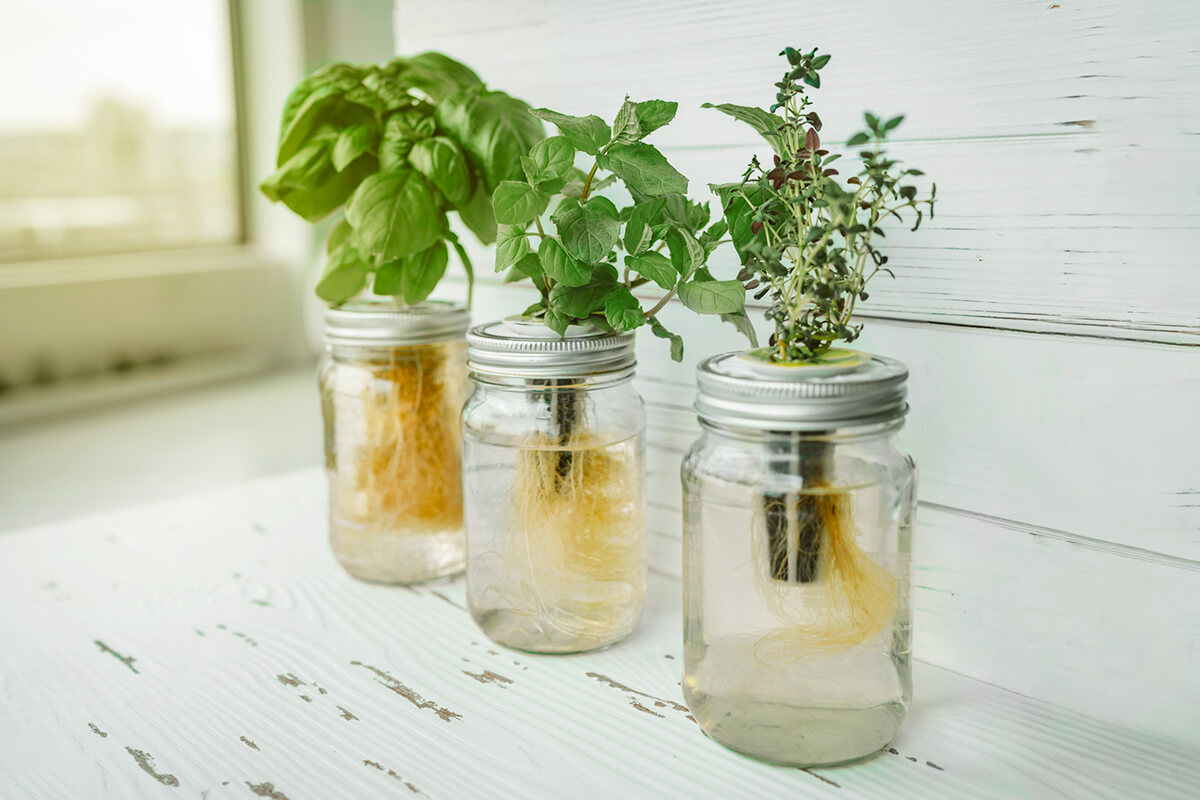
6. Ginger
Ginger is a versatile plant to grow because it’s useful both fresh and dried. The next time you buy a hand of ginger, set aside a 1 1/2- to 2-inch piece with a couple of visible buds. Plant this piece in a large pot (at least 12 inches wide and deep) filled with good soil, ideally with a bit of compost or manure worked into it.
Keep it warm and give it plenty of light (remember, it’s a tropical plant), and eight to 10 months later, you can dig it up and harvest a whole new hand. If you hold back another piece to replant, you can repeat this process almost indefinitely. Bonus tip: You can do the same with ginger’s pricier cousins, turmeric and galangal.
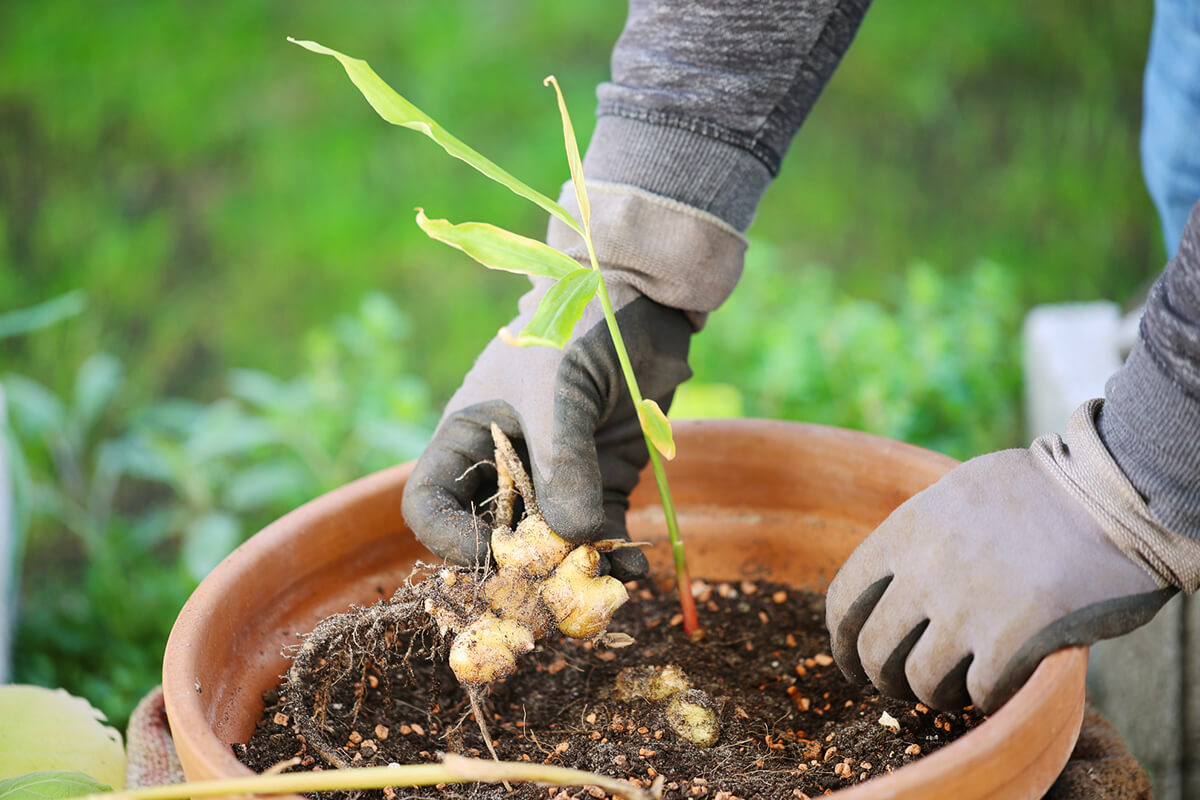


7. Rosemary
While leafy herbs are the easiest to regrow, you can also propagate woody herbs. Rosemary is often the most cooperative: Choose a nice, healthy-looking stem that’s 4 to 6 inches long, snip it just above a leaf node, remove the needles from the bottom 2 inches, and place it in water. Once it develops roots, transplant it into soil and let the plant do its thing.
Rosemary is a perennial in warm climates, so you can transplant it outside if you wish. You can also keep it in a pot and move it indoors when the weather turns cold.
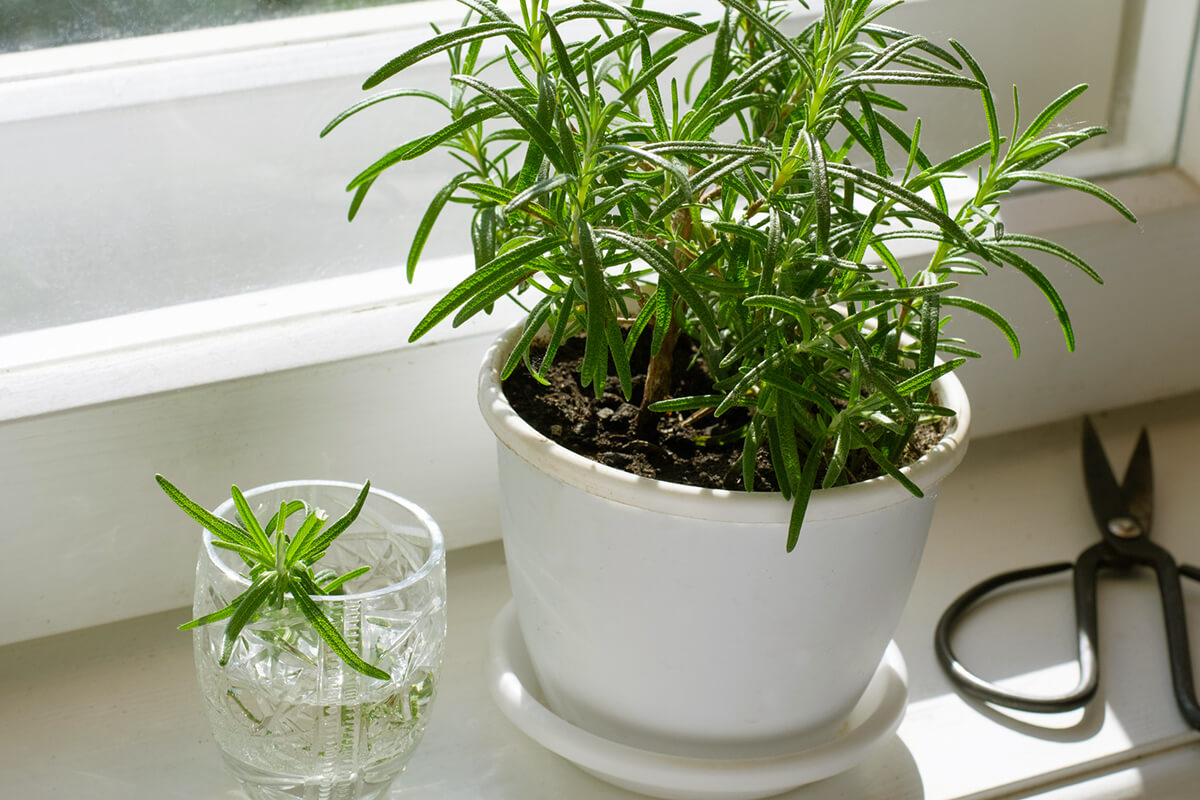
8. Potatoes
Growing new potatoes from old potatoes is a slam-dunk because that’s how they’re normally grown. There are a couple of catches, though. One is that supermarket potatoes are sometimes treated to prevent sprouting, which is good for storage but bad for growing. Another is that ordinary potato peels aren’t thick enough to feed a new plant as it grows, so you need to take a fairly deep cut (think pub-night potato skins).
The solution to both problems is to regrow potatoes that are already sprouting, since they aren’t the best for eating anyway. Cut the potatoes into 1 1/2- to 2-inch pieces, with a couple of sprouts or buds on each, and let them sit uncovered, cut-side up, for a day or two to scab over. Then plant them in garden beds or large containers. By midsummer, you can pull new, or baby, potatoes from the soil for potato salad or grilling. And by the end of summer, you’ll have full-sized spuds to harvest.
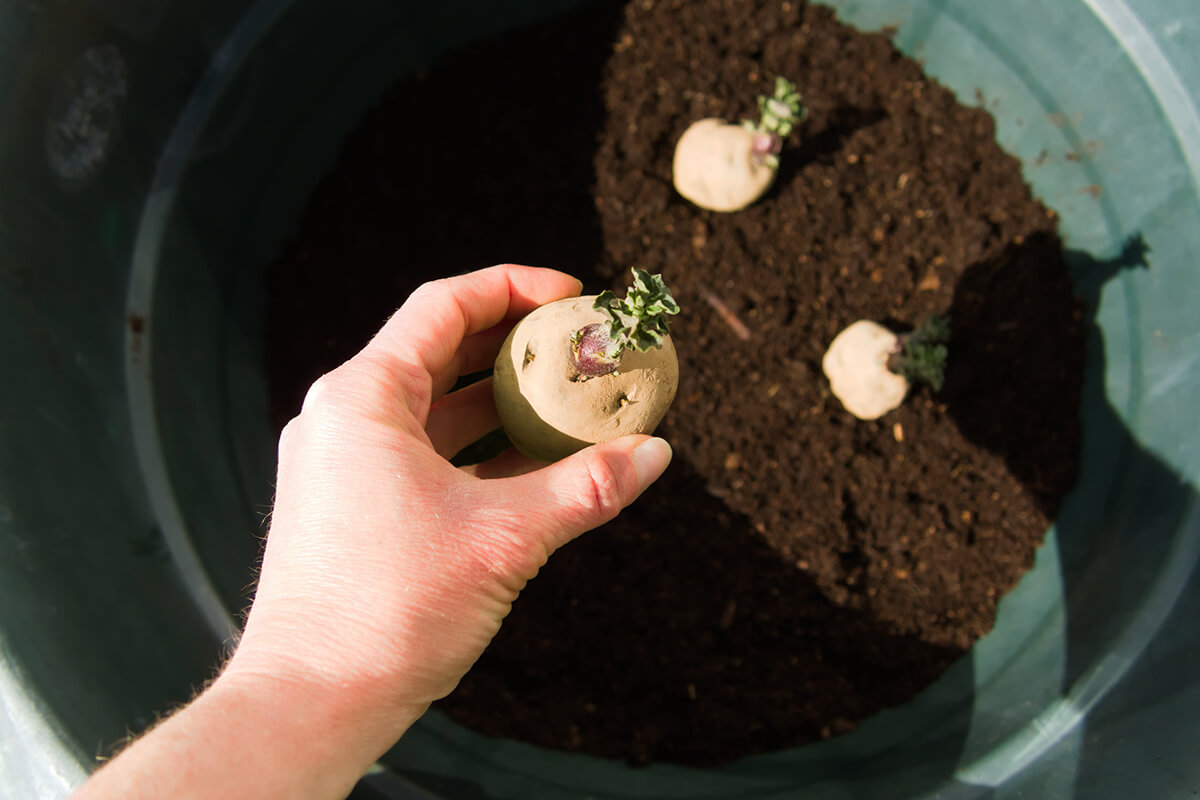
9. Bok Choy
If you like to cook stir-fries, ramen, or nutrient-dense side dishes, you’re probably familiar with bok choy (also called pak choi) or its close relative, baby or Shanghai bok choy. They’re closely related to cabbage and will cheerfully regrow for you with minimal effort.
Place the root end in a shallow tray of water, and — much like celery or romaine — new leaves will quickly begin to grow. Harvest the leaves from the outside in once they’re large enough, and the plant will keep producing new ones for months.

10. Sweet Potatoes
Sweet potatoes are pretty easy to regrow if one has lingered until it’s past its prime as a vegetable. Poke three or four toothpicks into it around its lengthwise “equator,” then pop one end in a pickle jar or Mason jar of water, using the toothpicks to keep only the bottom half of the potato submerged. Green shoots will start to grow from the top, and when they’re about 4 inches long, you can snap them off and root them in water.
Once the green shoots develop roots, transplant them into your garden or a large planter (a single sweet potato plant requires a 10-gallon container) on a deck or patio, and then harvest them in late summer or early autumn.

11. Onions or Shallots
Onions and shallots, much like green onions, are easy to regrow. In fact, they will try to sprout whether you want them to or not. One way to make use of a sprouted onion is to put the root end in a shallow dish of water, and snip the green stems as they emerge for use as a green onion replacement. Alternatively, you can plant them, burying the onion bulbs just below the soil line with the shoots sticking out, and let them grow a whole new onion (or shallot) for use later in the year.
One thing to be aware of is that the onions might bolt, or go to seed. If you see a woody seed stem develop, either harvest the onion immediately or allow it to go to seed completely and save those seeds for next year’s garden.

12. Root Vegetables
Most root vegetables, from turnips and rutabagas to carrots and parsnips, will try to regrow if given half a chance. Usually, your best bet is to cut the leafy ends from the vegetable, leaving a generous piece to provide nourishment, and let it scab over (like a potato) for a day or two. Then put it in water or soil, root-side down, and give it plenty of light.
Leaves will soon begin growing, and for many root vegetables — turnips, beets, rutabagas — harvesting them for fresh greens is a good option. Carrot greens aren’t used as often, but they’re edible and add a carrot-like flavor to soups and salads. In some cases, a new root will also form, but depending on the plant, it may go to seed instead. However, you can save the seeds and plant them if you wish.
